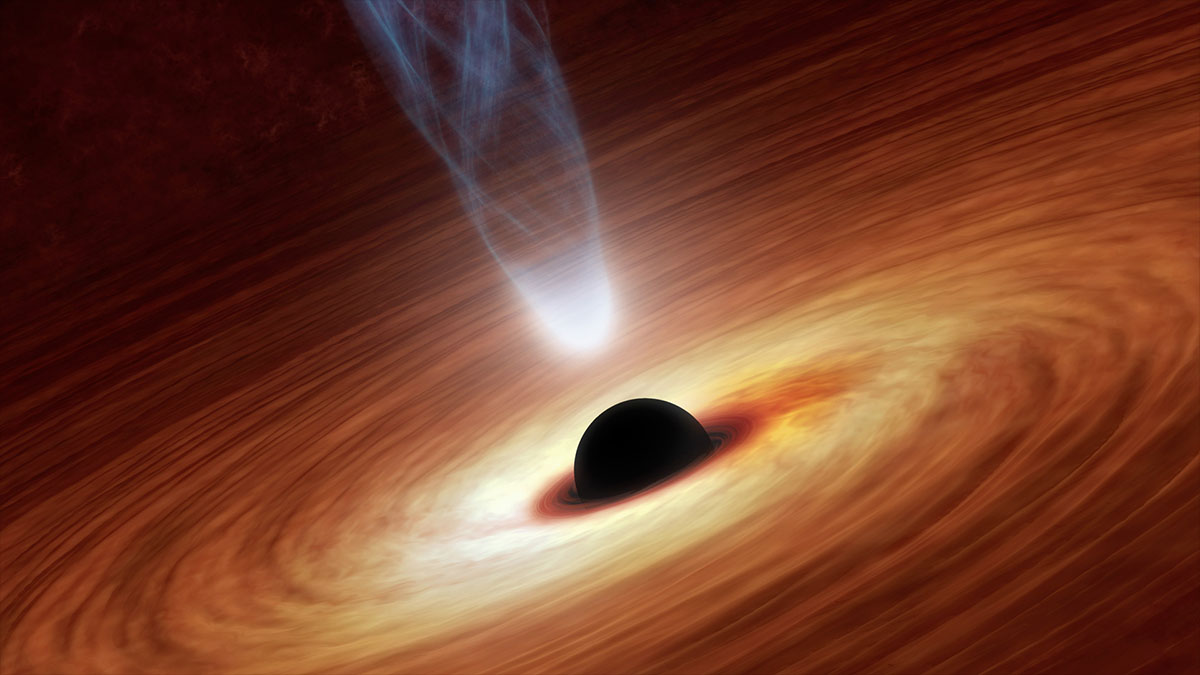can we use black holes created in particle colliders to power our homes?

Did you know that the world was supposed to end nine years ago as mad scientists in charge of the Relativistic Heavy Ion Collider unwittingly create a black hole capable of devouring our planet? You know, the same thing that many people thought would be happening with the LHC last year? Of course that hasn’t happened because for all the power of these colliders, they just don’t have enough energy to punch a hole in space and time, creating a stable black hole in the process. But one day, there might be a collider up to the task and the first human created black hole could be born. Could it actually be useful as a source of energy until we stop feeding its singularity and let it evaporate away into nothingness?
We know from observations that black holes actually can produce a lot of energy. When a black hole spins, it acts as a dynamo by dragging around magnetic fields and whatever bits of matter it consumes. The motion and the force of gravity form a turbulent and energetic accretion disk where powerful magnetic fields and the fabric of space and time itself become tangled around the object, creating a lot of friction and producing even higher temperatures and energies. In a future lab where a black hole just stable enough to start feeding would be born, couldn’t a very similar principle apply and the much feared force of nature be tamed for our benefit, albeit on an infinitesimal scale comparable to subatomic particles?
how stable are microscopic black holes?
Such a small size would become a huge problem in trying to harness the power of black holes. Let’s start with the fact that even the tiniest little black hole is really, really hard to create and it would take a lot more than a few atoms to do it. On top of that, Hawking radiation and the basic rules of quantum mechanics say that a micro black hole that small would exist less than the tiniest fraction of a second. The laws by which this happens are complex, but they have to do with how the smallest particles in the universe behave as they pop in and out of existence in the event horizon of a black hole. Even feeding these micro black holes might not be enough to stabilize them because of their inherent instability as objects. Theoretically, a black hole stable enough to feed would be as massive as Everest and about the size of an atom in diameter.
An important point to consider is that a micro black hole would have an event horizon smaller than the smallest subatomic particle we know of and wouldn’t have the pull to consume even a proton, much less anything on a macro scale. Even if it manages to find something to swallow, the Hawking radiation would tear it apart as it radiates more energy than it can eat. Without the mass it needs to stabilize itself and start snacking on anything that comes within its reach, it’s just not going to survive for more than a few fractions of a second. The only way we’d know it was even there is by detecting faint bursts of radio waves as it goes poof.
so, how practical is a micro black reactor?
Now imagine how much energy it would take to smash trillions and trillions of tons of matter at almost the speed of light to create this tiny, stable black hole. Even if it could be done (which is a very big if), the resultant object could have a very high charge and repel into space due to the electrostatic repulsion with the Earth. Because it’s infinitely dense, it could go through even the densest metal with the same ease as we float through water. On the other hand, it could lose its charge after formation and sink down to the center of our planet. What then? Doomsday time? Not exactly. If micro black holes did serious damage to stars and planets, we would’ve noticed by now according to a study by Steven Giddings and Michelangelo Mangano. And if there was a stable black hole in the Earth’s interior, by the time we’d notice anything amiss, Earth would be long dead after the Sun went through its red giant phase and became a white dwarf.
So not only does an atom-sized black hole require us to invest ridiculous amounts of energy, it also takes billions upon billions of years to grow big enough to emit noticeable energy. And we also need to keep in mind that creating black holes in colliders is a hypothetical concept. When we take a few high end equations and see what happens at theoretical maximums, some of the possible answers yield micro black holes. Even our most powerful colliders might not be up to the job and their best possible end result is something that would take billions of years to show up on even the most sensitive instruments we know how to build. It seems that for now, a black hole reactor is a technology that’s completely out of our reach and micro black holes are not a viable energy source in the first place due to their unstable nature.





